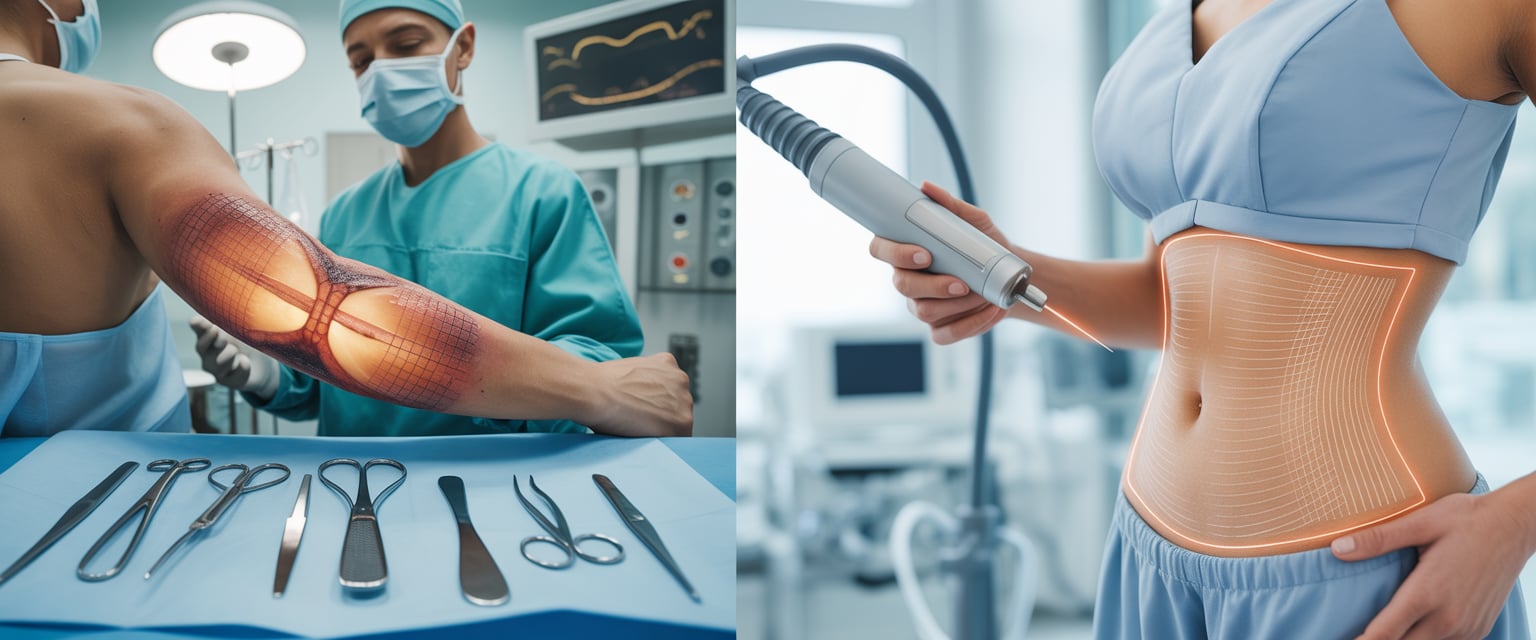In recent years, more people have become interested in understanding the full scope of body contouring and reconstructive treatments, especially with the growing awareness of cost and recovery expectations. Fat Burn Surgery Price & Recovery: Full Guide 2026 serves as a comprehensive resource for anyone considering fat reduction or reconstructive surgery after burns or injuries.

This guide highlights the latest advancements in medical techniques, the real costs of procedures like liposuction and tummy tucks, and the essential recovery steps to achieve safe, long-lasting results. Whether you’re seeking aesthetic enhancement or reconstructive healing, Fat Burn Surgery Price & Recovery: Full Guide 2026 provides clear, expert insights to help you make informed and confident health decisions.
Fat Burn Surgery Price & Recovery
Burn and plastic surgery cover a wide range of treatments, from repairing skin after severe burns to improving appearance after injury or surgery. These procedures also include fat reduction surgeries and reconstructive operations that restore both function and confidence. Burn surgery helps repair damaged skin, reduce pain, and improve movement and appearance after a burn injury.
Many people also seek fat reduction or liposuction to reshape certain areas of the body. Recovery from these procedures, such as six weeks after liposuction, often involves careful monitoring to prevent complications like skin burns or uneven healing. Understanding the process, cost, and recovery timeline helps patients make informed decisions.

Specialized burn and plastic surgery centers provide expert care for complex cases, including hand burns and reconstructive needs. Skilled surgeons like Dr. Peter Grossman, Dr. David Wilson, and Dr. James Burn focus on restoring both form and function, offering patients safe and effective results.
Burn Surgery Procedures and Indications
Burn surgery focuses on removing damaged tissue, restoring skin function, and improving appearance after injury. Treatment depends on burn depth, size, and location, as well as the patient’s overall health and recovery goals.
Burns That Require Surgery
Some burns heal on their own, but deeper or larger burns often need surgery to prevent infection and scarring. Third-degree burns destroy both the outer and inner skin layers, leaving the area dry, leathery, and painless due to nerve damage.
Surgeons remove dead tissue through a procedure called debridement. This step helps healthy tissue regrow and reduces the risk of complications. In many cases, skin grafts are required to close the wound and promote healing.
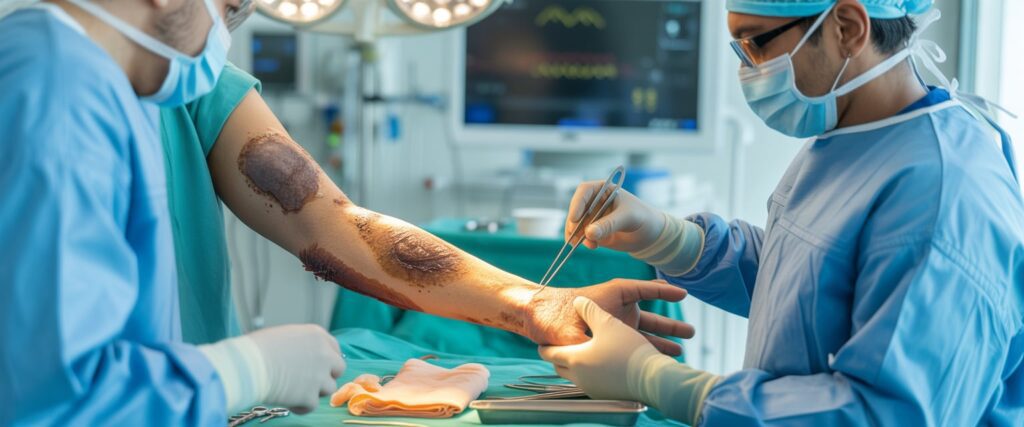
Burns covering joints, hands, or the face may also need surgery to preserve movement and function. Early surgical care can shorten recovery time and improve long-term outcomes.
Burns That Require Surgical Intervention
Surgical intervention becomes necessary when the body cannot repair the damage naturally. Full-thickness burns and deep partial-thickness burns often fall into this category. These injuries can cause severe fluid loss and increase the chance of infection.
Doctors may perform escharotomies or fasciotomies to relieve pressure from swelling and restore blood flow. These procedures prevent tissue death and reduce pain caused by tight, burned skin.
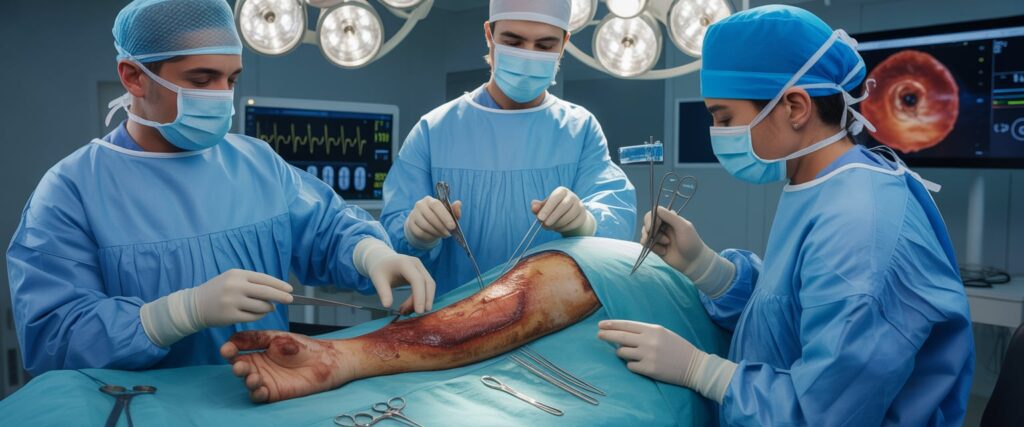
When infection or poor circulation threatens nearby tissue, additional operations may be needed. In some cases, staged surgeries help rebuild the affected area in several steps rather than one procedure.
Plastic Surgery in Burns
Plastic surgery helps restore both appearance and function after severe burns. It can involve skin grafting, tissue expansion, or flap surgery to replace damaged tissue with healthy skin from another body part.
Plastic surgeons often work with burn specialists to plan reconstruction once the wounds have healed enough. The timing of surgery depends on the patient’s recovery and scar formation.
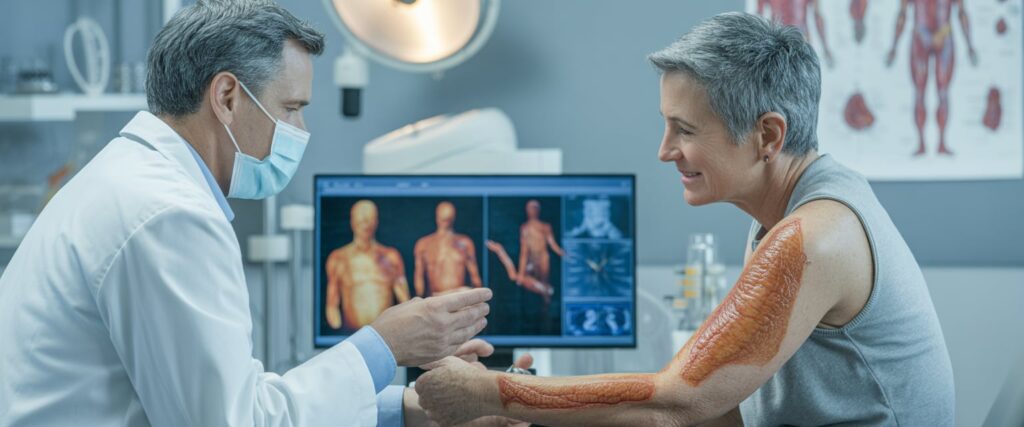
Common reconstructive goals include:
- Improving joint movement
- Reducing tight or thick scars
- Restoring facial symmetry
- Covering exposed tendons or bones
These operations can take place weeks, months, or even years after the initial injury.
Plastic Surgery for Burn Marks
Even after healing, burn scars can affect appearance and mobility. Plastic surgery for burn marks aims to make scars less visible and improve skin flexibility.
Treatment options include:
| Procedure | Purpose |
|---|---|
| Scar revision | Removes or repositions scars for a smoother look |
| Laser therapy | Reduces redness and thick scar tissue |
| Dermabrasion | Smooths uneven skin texture |
| Skin grafting | Replaces scarred skin with healthy tissue |
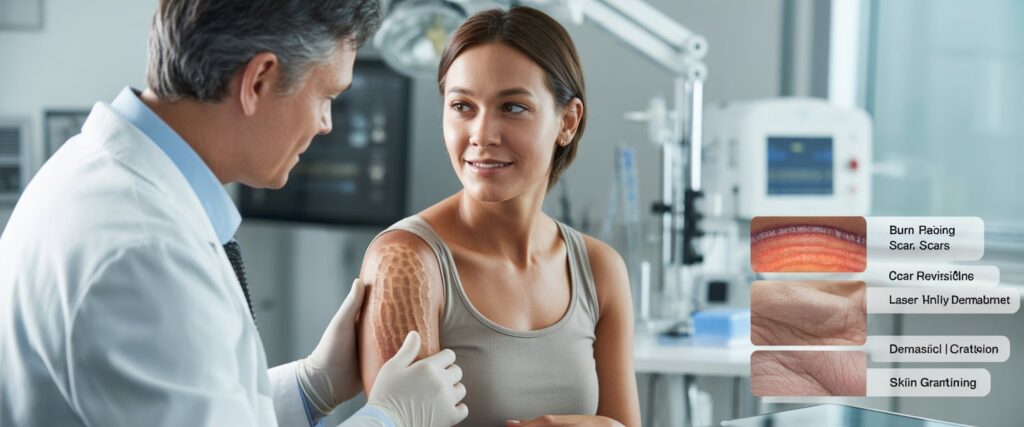
These procedures can help patients regain confidence and comfort in daily activities. Some may need multiple treatments for the best results.
Fat Burn Surgery and Recovery
Fat reduction surgery removes or reshapes fat deposits that do not respond to diet or exercise. Recovery depends on the type of procedure, the patient’s health, and how well they follow post-surgery care instructions.
Surgery for Reducing Fat
Fat reduction surgery includes liposuction, tummy tuck (abdominoplasty), and body contouring. Each procedure targets specific areas like the abdomen, thighs, or arms. Liposuction removes fat through suction, while a tummy tuck tightens skin and muscles after fat removal.
Patients usually receive local or general anesthesia. The surgeon makes small incisions to insert a thin tube called a cannula to remove fat. The process may take 1–3 hours depending on the area treated.
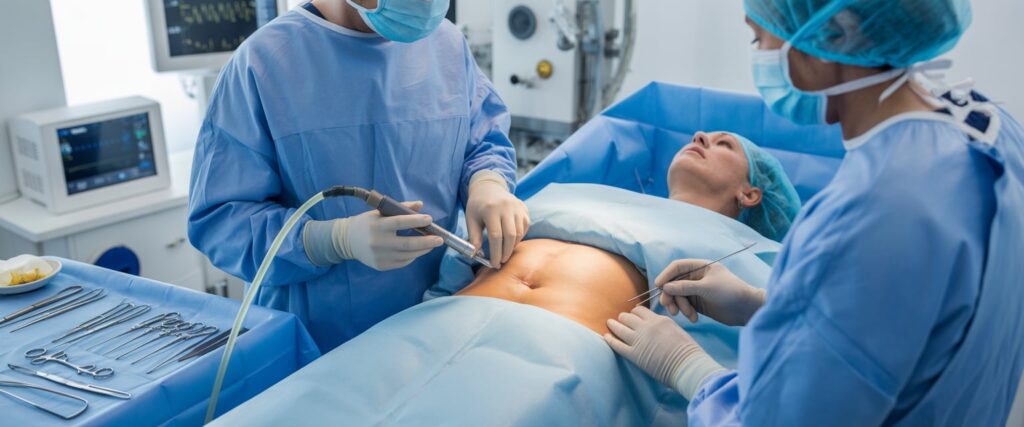
After surgery, swelling and bruising are common. Compression garments help reduce swelling and support healing. Most patients return to light activity within 1–2 weeks. Full recovery may take several months, depending on the extent of surgery.
Key recovery tips:
- Follow prescribed medications and wound care instructions.
- Avoid strenuous activity for at least 4–6 weeks.
- Maintain a stable weight to preserve results.
Fat Burn Surgery Price
The cost of fat reduction surgery varies by procedure type, clinic location, and surgeon experience. In the United States, the average price for liposuction ranges from $3,000 to $7,500 per area. A tummy tuck can cost between $6,000 and $12,000.
| Procedure | Average Cost (USD) | Typical Recovery Time |
|---|---|---|
| Liposuction | $3,000–$7,500 | 2–6 weeks |
| Tummy Tuck | $6,000–$12,000 | 6–8 weeks |
| Body Contouring | $8,000–$15,000 | 8–12 weeks |

Additional fees may include anesthesia, facility use, and post-surgery garments. Insurance rarely covers cosmetic fat reduction unless it’s medically necessary.
Patients should review quotes carefully and confirm what is included. Choosing a board-certified plastic surgeon ensures safety and quality results, even if the cost is higher.
Back Burning 6 Weeks After Lipo
Mild burning or discomfort six weeks after liposuction can occur as nerves heal and tissues adjust. However, persistent or worsening burning may indicate nerve irritation, infection, or fluid buildup.
Patients should monitor for redness, warmth, or discharge around incision sites. These signs may require medical evaluation. Pain that continues beyond six weeks should not be ignored.
To ease discomfort, doctors may recommend gentle massage, compression garments, or anti-inflammatory medication. Avoiding heat exposure and heavy exercise helps prevent further irritation.

If symptoms remain after conservative care, an ultrasound or follow-up exam can identify underlying issues such as seroma or scar tissue formation. Early attention helps prevent complications and supports proper recovery.
Specialized Burn and Plastic Surgery Centers
Specialized medical centers treat both functional and cosmetic needs after burn injuries. These facilities use advanced surgical methods, infection control, and personalized care to help patients recover skin function and appearance.
Burn and Plastic Surgery Center
A Burn and Plastic Surgery Center focuses on treating patients with severe burns or complex reconstructive needs. These centers combine burn management, skin grafting, and plastic surgery in one place.
Doctors assess burn depth, tissue damage, and infection risk before planning surgery. Common treatments include skin grafts, flap procedures, and scar revision. Early intervention helps reduce complications and improves healing outcomes.

Most centers provide rehabilitation programs with physical therapy and wound care. Patients often receive psychological support to manage pain and emotional stress.
| Key Services | Purpose |
|---|---|
| Skin grafting | Replace damaged tissue |
| Scar revision | Improve skin texture and mobility |
| Reconstructive surgery | Restore function and appearance |
Soni Burn and Plastic Surgery Hospital
Soni Burn and Plastic Surgery Hospital specializes in acute burn care and reconstructive treatment. It uses modern surgical tools and infection-control systems to ensure patient safety.
The hospital’s team includes plastic surgeons, anesthesiologists, and rehabilitation experts who coordinate care from admission to recovery. They treat injuries from thermal, chemical, and electrical burns.
Patients receive customized treatment plans based on burn severity and location. The hospital also provides follow-up care for scar management and mobility improvement.

Its facilities often include intensive care units, sterile operating rooms, and dedicated burn wards designed to reduce infection risks.
Plastic Surgery for Hand Burns
Hand burns require specialized surgical attention because the hands are vital for movement and daily tasks. Surgeons focus on preserving function, reducing scarring, and restoring flexibility.
Treatment may involve skin grafts, flap reconstruction, or tendon repair. Early surgery can help prevent contractures that limit finger movement.
Rehabilitation plays a major role after surgery. Patients work with hand therapists to regain strength and coordination.
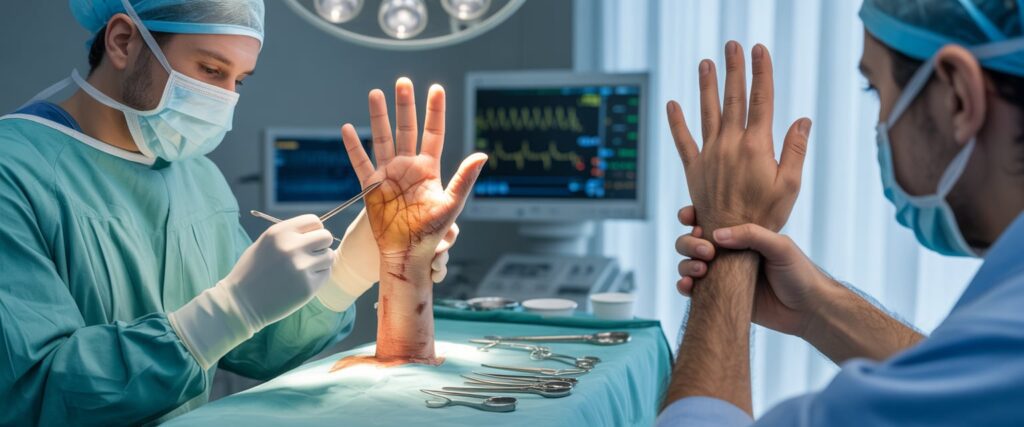
Common goals include:
- Restoring grip and finger motion
- Minimizing scar stiffness
- Improving skin texture and sensitivity
Acid Burn Plastic Surgery
Acid burn plastic surgery addresses deep chemical injuries that damage skin layers and underlying tissue. These burns often require multiple reconstructive procedures to restore facial or body features.
Surgeons first remove damaged tissue to prevent infection. They then use skin grafts, flaps, or tissue expansion to rebuild affected areas.
Treatment focuses on both function and appearance, especially when burns affect the face, neck, or hands.
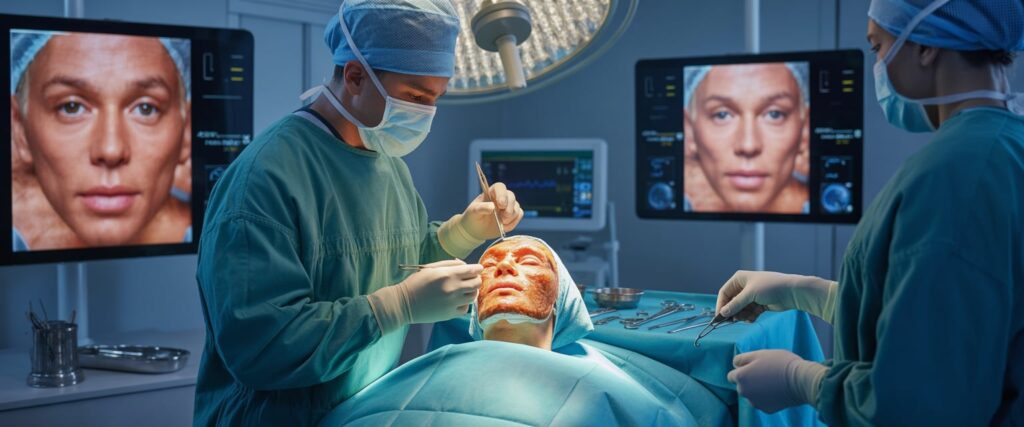
Post-surgery care includes scar management, laser therapy, and counseling to support emotional recovery and improve long-term outcomes.
Renowned Surgeons in Burn and Orthopaedic Surgery
Specialists in burn and orthopaedic surgery combine technical skill with precise medical care. Their work focuses on restoring function, reducing pain, and improving recovery after severe injuries or reconstructive procedures.
Alexander Burns Orthopaedic Surgeon
Dr. Alexander Burns is an orthopaedic surgeon known for his work in joint reconstruction and trauma management. He treats patients with complex bone fractures, sports injuries, and post-surgical complications.
He emphasizes early mobility and structured rehabilitation. His approach often includes minimally invasive techniques that shorten recovery time and reduce scarring.

Dr. Burns also contributes to clinical research on bone healing and implant design. He works closely with physiotherapists to ensure patients regain strength and stability after surgery. His practice reflects a balance between surgical precision and long-term patient care.
David Wilson Burns Surgeon
Dr. David Wilson is a burn surgeon with experience in acute burn care and reconstructive surgery. He manages both emergency cases and long-term recovery for patients with thermal, chemical, or electrical burns.
He uses skin grafts, tissue expansion, and laser treatments to restore damaged skin and improve function. His focus is on preventing infection, minimizing scarring, and supporting psychological recovery.
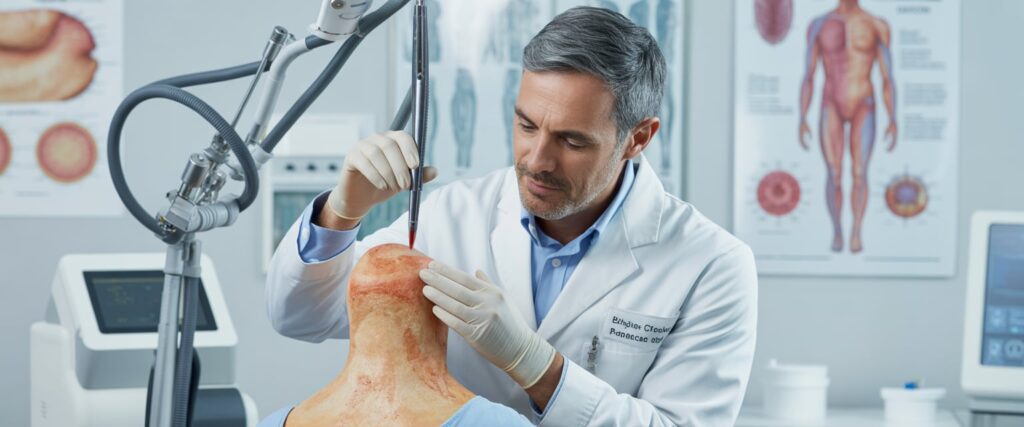
Dr. Wilson often leads multidisciplinary teams that include nurses, physical therapists, and occupational therapists. He also participates in training programs that teach advanced wound management and surgical techniques for burn care.
James Burn Orthopaedic Surgeon
Dr. James Burn specializes in spinal and musculoskeletal surgery. His work includes corrective procedures for spinal deformities, joint repair, and trauma-related injuries.
He uses image-guided surgery to improve accuracy and reduce complications. His patients often benefit from shorter hospital stays and faster rehabilitation.

Dr. Burn also studies the long-term outcomes of orthopaedic implants and surgical materials. He promotes patient education, helping individuals understand their treatment options and recovery expectations. His careful and methodical approach supports consistent surgical results.
Peter Grossman Plastic Surgery
Dr. Peter Grossman is a plastic and reconstructive surgeon recognized for his expertise in burn reconstruction and aesthetic restoration. He treats patients with severe burn scars and deformities, focusing on both appearance and function.
His procedures include skin grafting, flap reconstruction, and scar revision. He uses advanced wound-healing technologies and custom treatment plans to achieve natural-looking results.
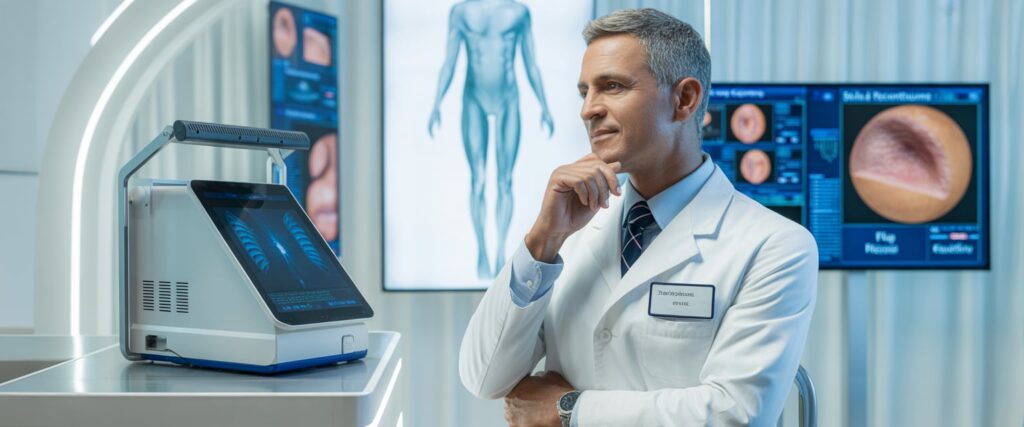
Dr. Grossman leads a specialized burn and plastic surgery center that provides comprehensive care. His team addresses both physical and emotional recovery, ensuring patients receive continuous support throughout the healing process.
Conclusion
Understanding both the financial and medical aspects of cosmetic and reconstructive procedures is vital before taking any step toward surgery. Fat Burn Surgery Price & Recovery: Full Guide 2026 gives readers the clarity they need to balance their expectations with real outcomes, from budgeting for treatment to managing the recovery timeline effectively.
With modern surgical innovations, expert surgeons, and specialized recovery care, achieving your ideal results has become safer and more attainable than ever. By following the expert insights shared in Fat Burn Surgery Price & Recovery: Full Guide 2026, patients can approach their journey with confidence—knowing they are well-prepared for every stage of transformation.
Frequently Asked Questions
Costs, recovery times, and treatment options differ based on the type and severity of the condition. Patients often want to understand pricing, healing expectations, and modern techniques used in plastic and burn surgeries.
What is the average cost of fat burn surgery?
The average cost of fat reduction surgery ranges from $3,000 to $8,000 depending on the clinic, location, and the amount of fat removed. Prices may not include anesthesia, facility fees, or follow-up care.
How does plastic surgery help with acid burn scars?
Plastic surgery can reduce the visibility of acid burn scars through skin grafts, laser treatments, or tissue expansion. These methods help restore skin texture and function while improving comfort and flexibility.
What should I expect during recovery from back surgery after liposuction?
Patients often experience swelling, mild pain, and tightness for several weeks. Most return to light activities after about 4 to 6 weeks, but full recovery can take longer depending on the extent of the procedure.
When is surgical intervention necessary for burn injuries?
Surgery becomes necessary when deep burns damage multiple skin layers or when natural healing cannot close wounds properly. Surgeons may perform debridement or skin grafting to prevent infection and restore skin coverage.
What are the advancements in plastic surgery for treating deep hand burns?
Modern techniques include microsurgery, skin substitutes, and nerve repair. These methods improve movement, reduce scarring, and help patients regain hand function more effectively than older approaches.
How can plastic surgery improve the appearance of burn marks?
Plastic surgeons use laser therapy, dermabrasion, or flap reconstruction to smooth uneven skin and reduce discoloration. The goal is to make scars less noticeable and improve the skin’s overall appearance.
Why does my back feel like it’s burning after liposuction?
A burning sensation after liposuction is normal and happens due to temporary nerve irritation or healing inflammation.
What to expect 6 weeks after liposuction?
At 6 weeks, swelling and bruising usually reduce, and you start seeing visible body contour results.
Is it normal to be sore 6 weeks after liposuction?
Mild soreness at 6 weeks is normal, as deep tissues and nerves are still healing.
How long does it take for nerves to heal after liposuction?
Nerves typically heal within 3 to 6 months, depending on the body area and recovery speed.
Why is my surgery scar burning?
A burning feeling in a scar is caused by nerve regrowth or mild inflammation during healing.
Can burn scars be removed by surgery?
Yes, surgery can improve the appearance of burn scars but may not remove them completely.
Do burn scars go away?
Burn scars fade over time but rarely disappear completely without treatment.
How to stop a burn scarring?
Cool the burn, keep it clean, moisturize, and avoid picking or sun exposure to reduce scarring.
Can I lose 10 kg with liposuction?
Liposuction is not for weight loss; it removes fat deposits and may reduce 2–5 kg only.
What is the cost of fat removal surgery?
The cost varies by country and area but usually ranges from $2,000 to $6,000.
How much is 1 liter of liposuction?
Removing 1 liter of fat typically costs $1,000 to $2,000, depending on the clinic and surgeon.
Is liposuction 100% safe?
Liposuction is generally safe when done by an experienced surgeon, but every surgery has some risks.
What is a scar revision?
Scar revision is a procedure that improves a scar’s appearance by removing or reshaping it.
How much does scar revision cost?
It usually costs between $500 and $3,000, depending on scar size and treatment type.
Is it worth getting a scar revision?
Yes, it’s worth it if the scar affects your confidence or movement.
How painful is a scar revision?
Pain is minimal; most patients feel mild discomfort managed with painkillers.
